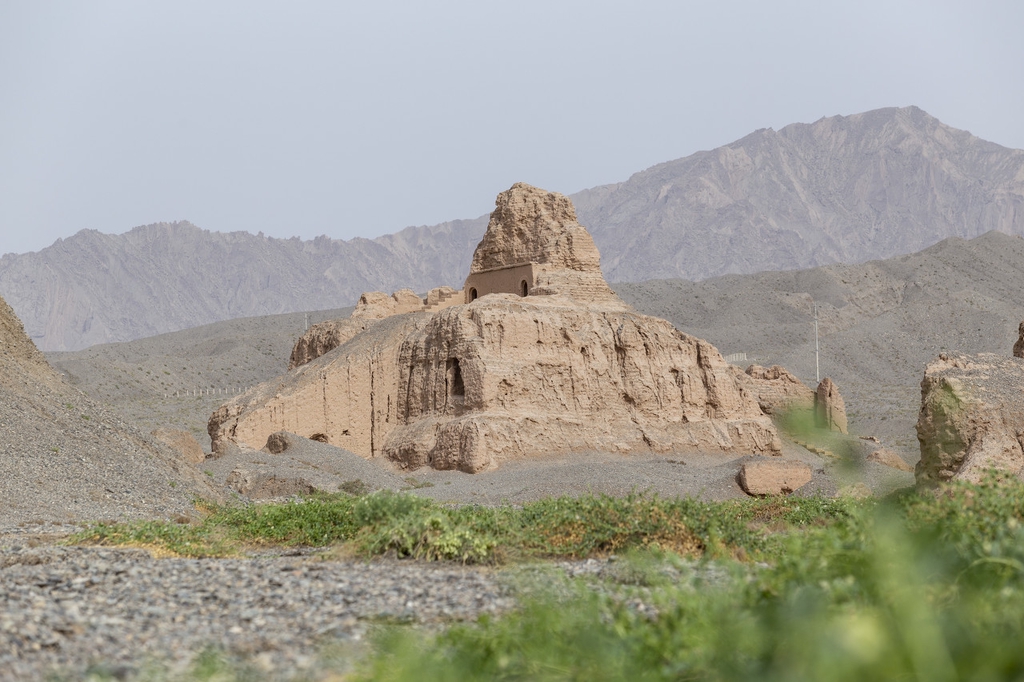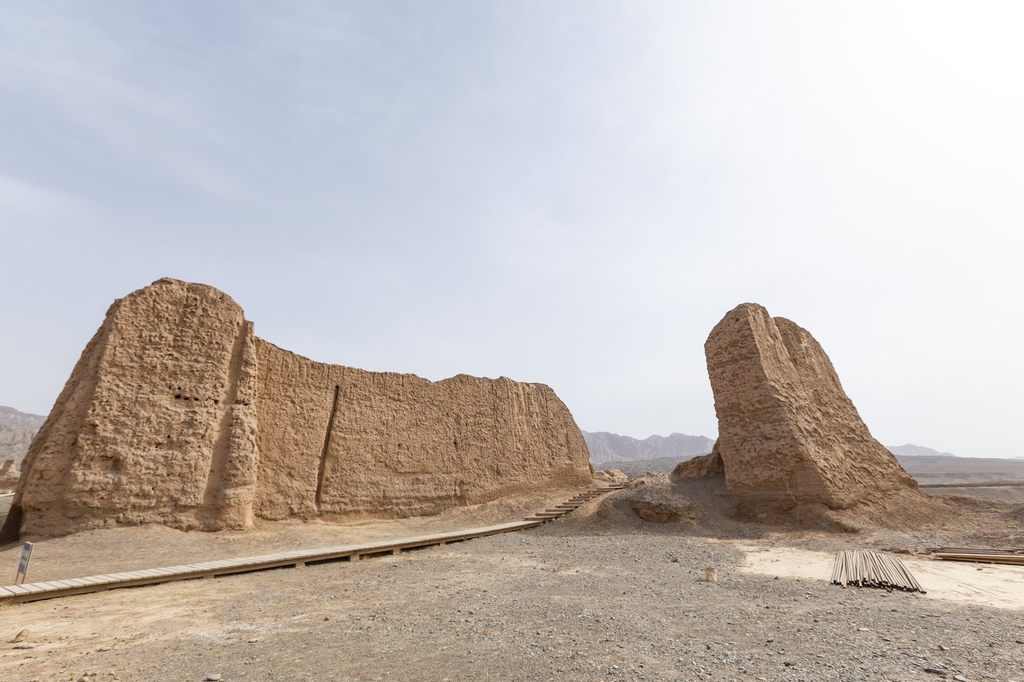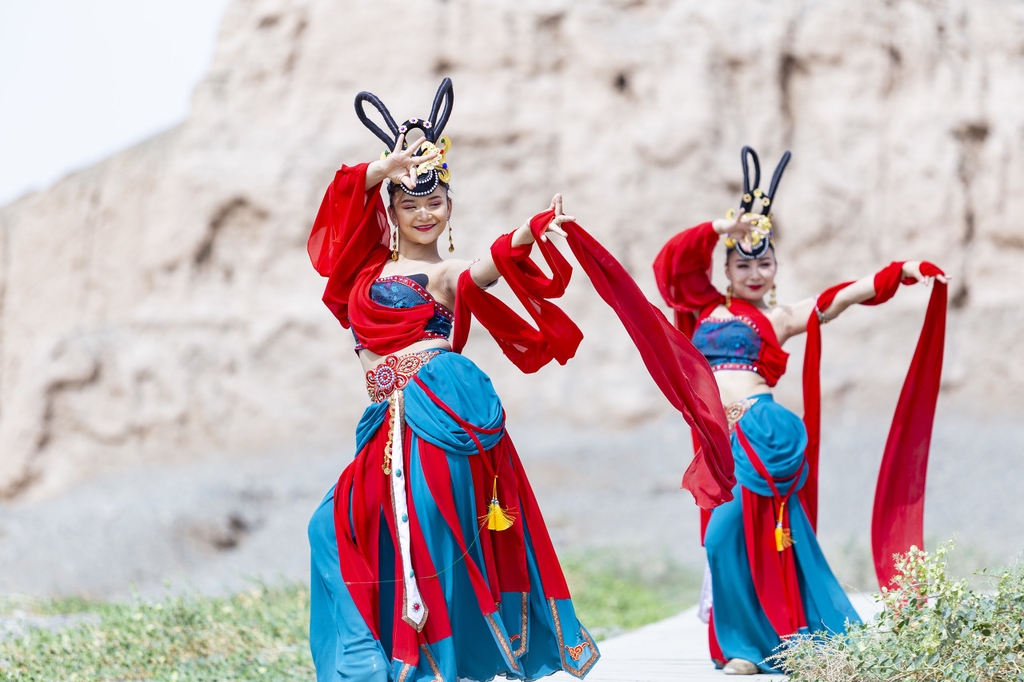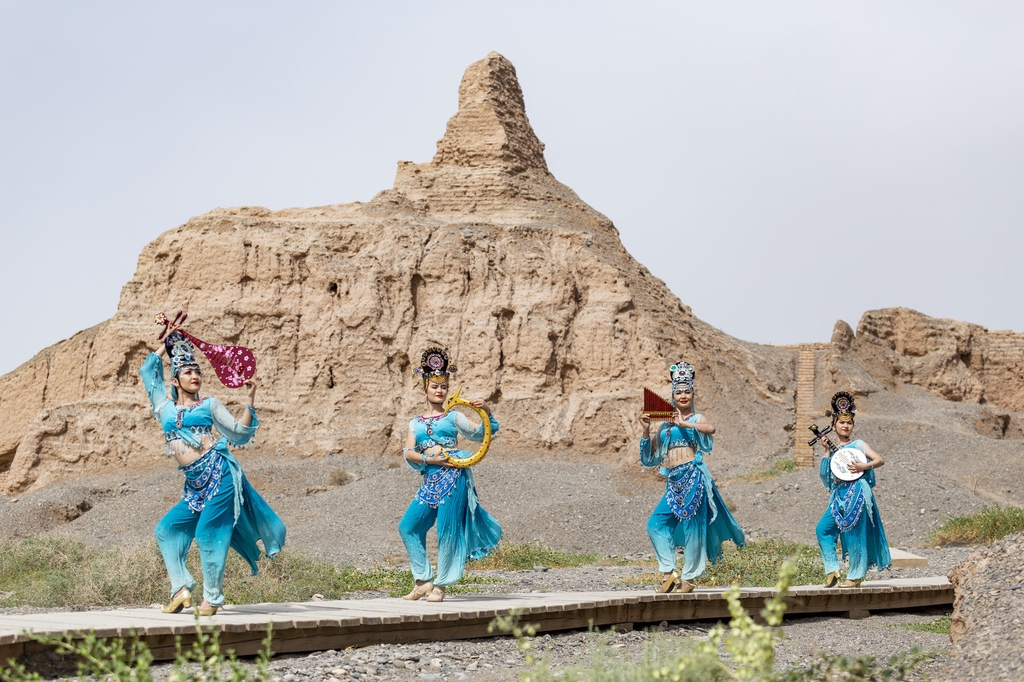
A file photo shows sections of the Subash Buddhist Ruins in Kucha City, Xinjiang Uygur Autonomous Region. /IC
A file photo shows sections of the Subash Buddhist Ruins in Kucha City, Xinjiang Uygur Autonomous Region. /IC

A file photo shows sections of the Subash Buddhist Ruins in Kucha City, Xinjiang Uygur Autonomous Region. /IC
A file photo shows sections of the Subash Buddhist Ruins in Kucha City, Xinjiang Uygur Autonomous Region. /IC

Performers dance against the backdrop of the Subash Buddhist Ruins in Kucha City, Xinjiang Uygur Autonomous Region, amid efforts to boost tourism to this ancient relic site. /IC
Performers dance against the backdrop of the Subash Buddhist Ruins in Kucha City, Xinjiang Uygur Autonomous Region, amid efforts to boost tourism to this ancient relic site. /IC

Performers dance against the backdrop of the Subash Buddhist Ruins in Kucha City, Xinjiang Uygur Autonomous Region, amid efforts to boost tourism to this ancient relic site. /IC
Performers dance against the backdrop of the Subash Buddhist Ruins in Kucha City, Xinjiang Uygur Autonomous Region, amid efforts to boost tourism to this ancient relic site. /IC
Located along the banks of Kucha River of Xinjiang Uygur Autonomous Region, the Subash Buddhist Ruins are the remnants of the largest cluster of Buddhist buildings in Xinjiang that were established in the 3rd century, and reached a peak during the Sui (581-618) and Tang (618-907) dynasties. Subash means "water source" in the Uygur language, and the settlement once served as an important oasis that witnessed the development and prosperity of Buddhism in this land.
Only the 110,000-square-meter western half of the site near Kucha City is open to the public, where a central 11-meter-high pagoda is surrounded by temples, grottos, halls and monks' dormitories. Coins, pottery works, iron and copper ware, murals, clay Buddhist figurines and Buddhist relic boxes dating back to the 3rd and 9th centuries have all been unearthed at the ruins.
The Subash Buddhist Ruins form part of the extensive 2014 UNESCO-listed World Heritage Site known as the "Silk Roads: the Routes Network of Chang'an-Tianshan Corridor."